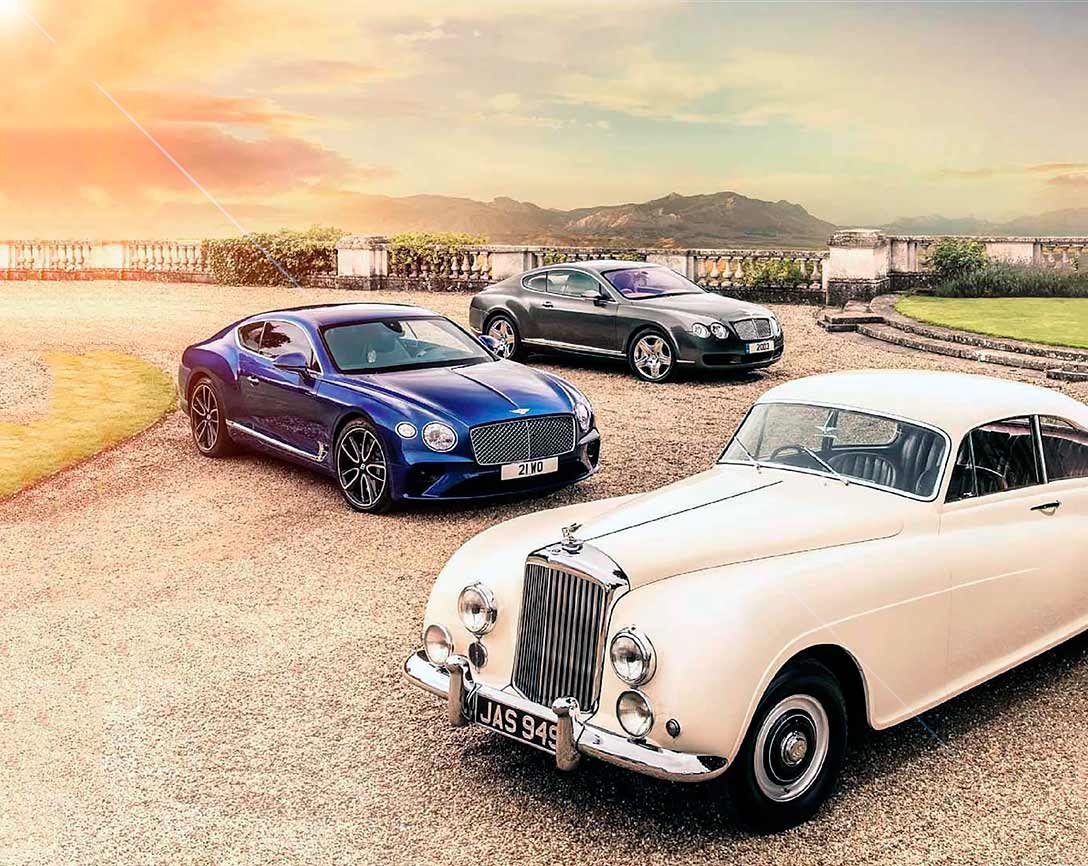
Bentley’s finest Bentleys for the boys: rich or poor. The inaugural Salon Privé sale in partnership with Silverstone Auctions was a real ‘I was there’ event. It took place during the concours’ swansong at Syon Park in 2014, and frenzied bidding by a pair of celebrities garnered acres of press coverage.
Radio and TV personality Chris Evans snapped up the headlining Daytona Spyder for £2.27 million, while Jay Kay led the charge for a gorgeous 1954 Bentley R Type Continental Fastback (sorry, Sports Saloon). Once the sums were done, the Bentley had set Jamiroquai’s frontman back £1,012,000. Yet rather than jaws hitting the floor, there was a mood of quiet appreciation that such a wonderful car was commanding the financial respect it deserved. After all, it wasn’t so many years earlier that the cognoscenti marvelled that something of such rarity, such pedigree and such presence – has any machine ever better pulled off being simultaneously stately and rakish? – could be bought for around £100,000. That was nothing short of an insult.
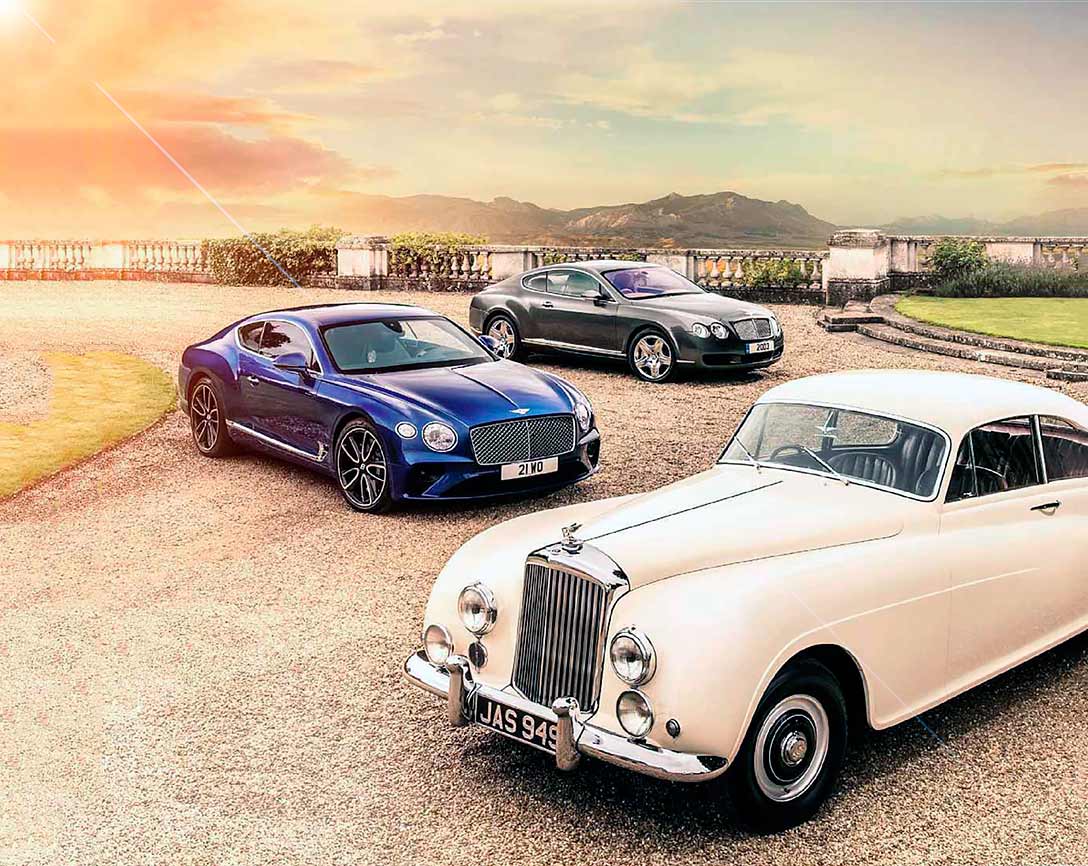
Prices have fallen back since – the ex-Elton John and Lord Sugar example made £366,666 at a recent Bonhams sale, still more than double what it sold for a decade earlier – but what that Brentford auction in 2014 did was to move the Fastback out of the shadows and into the mainstream, where it remains a fixture in just about every dream garage to this day. And rightly so.
It’s difficult to imagine that the massproduced next-generation Continental GT will ever climb to such dizzying financial heights but, having spent the past 15 years blighted by a less than flattering image based solely on its perceived customer base, the 2003-on model is equally unlikely ever to be much cheaper than it is right now. Even Octane’s biggest critic of the GT’s driving dynamics conceded: ‘If you want to go insanely fast in a straight line, you can’t spend £25k better.’ That’s me sold.
200mph for £25,000! bargain Continental GT ’1952 Continental fastback – most elegant Bentley ever flat-out in the new Continental Prototype.
MOST BEAUTIFUL BENTLEY / Crewe’s Muse
Bentley design boss Stefan Sielaff on John Blatchley’s sublime R Type Fastback.
In 1952 the R Type Continental Fastback defined all that’s best about Bentley. Under the spotlight, it’s still the inspiration for today’s cars… Words Glen Waddington. Photography Charlie Magee.
More than six decades have passed since the Bentley R Type Continental Fastback – or Bentley Continental Sports Saloon, as it was officially known – took on the mantle of World’s Fastest Four-Seater. It was also the world’s most expensive, and quite possibly the most beautiful, too. Something special happened when Bentley’s chief engineer Ivan Evernden and stylist John Blatchley came up with a windcheating shape, HJ Mulliner beat it from aluminium, and with it clad the surprisingly sporting chassis of Bentley’s mainstay R Type saloon.
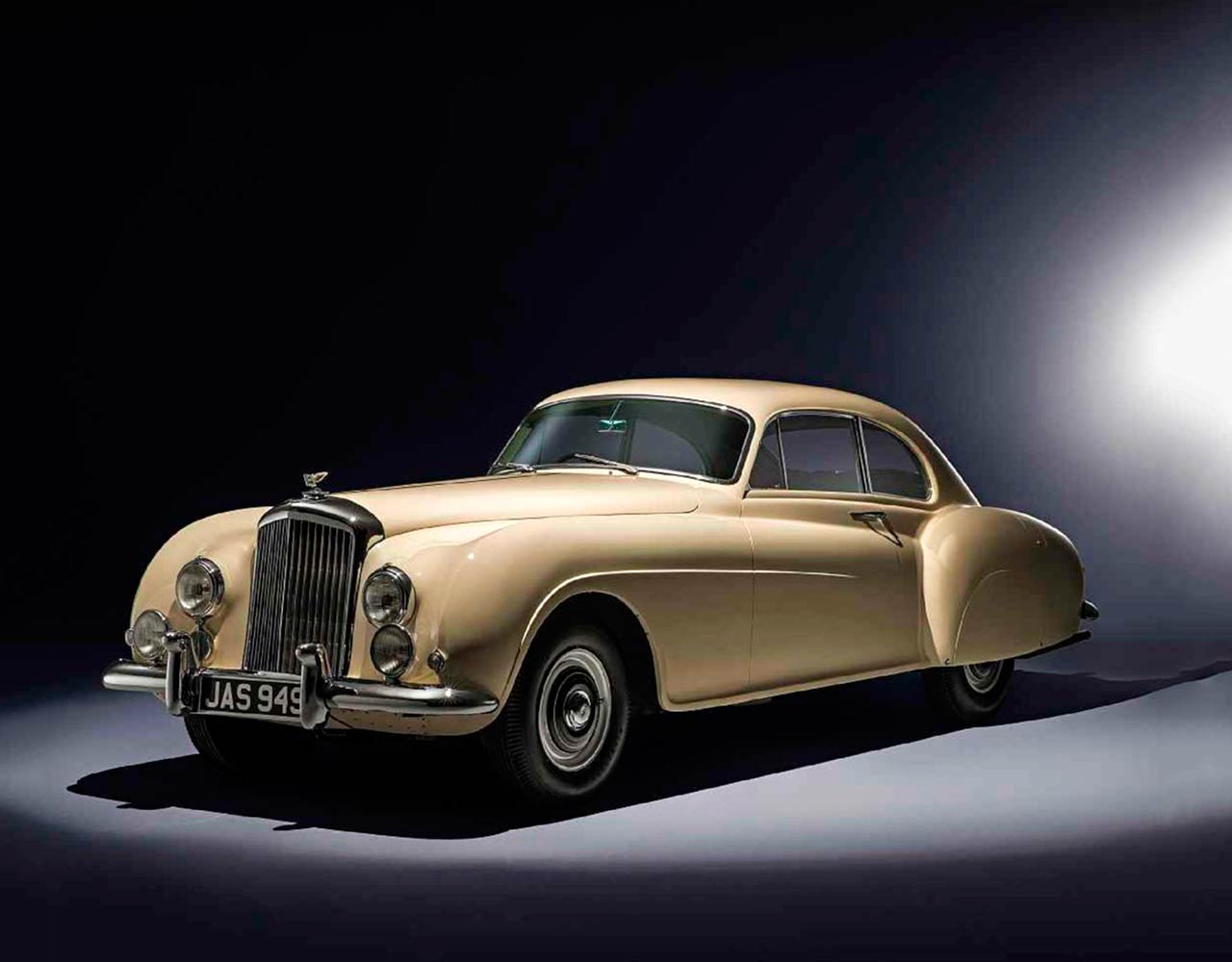
It’s no wonder then, that when Bentley was relaunched under new ownership following the Volkswagen Group’s takeover in 1998, Crewe was tasked with producing a new car inspired by the old one. It was such an iconic shape that it would define the ‘design DNA’ of Bentley’s new products. And when the Continental GT (see page) was launched, there was no doubt where its shape, and especially its swagelines and haunches, had come from. Only now, 15 years later, is that car about to be replaced by an all-new one, still recognisably the offspring of Blatchley’s classic.
Yet while Bentley’s first mass-production saloon went on to sell in significant numbers – initial production capacity of 9500 cars per year led to a 12-month waiting list – the Fastback sold only 208 between 1952 and 1955. It’s rare and coveted, and deservedly so. But this was no mere production car. It was assembled by hand and offered for the sum of £6928, when launched. A Ford Consul, for comparison, then cost £707; the average UK annual salary was £468, and the average sale price of a house was £1891.
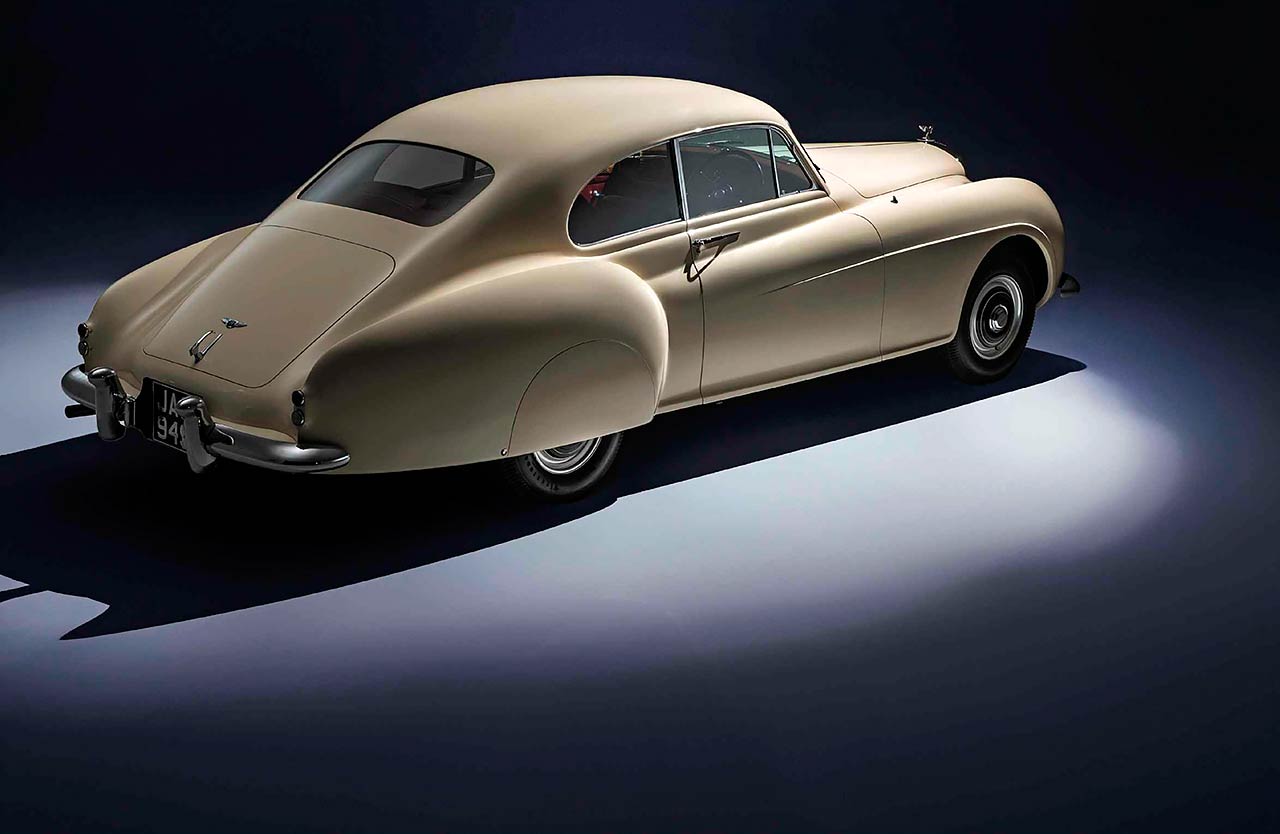
‘My favourite bit? The gracious flow of the front and rear fenders, like a bride walking into the church’ – Stefan Sielaff
This was a big car, fully 206in (5.245m) long, so it’s really a limo yet carries only four in a two-door fastback body that weighs a relatively sylph-like 1724kg. It was made for the type of buyer who might otherwise have employed a chauffeur (and probably did) but chose this car when he wanted to drive himself. Across a continent, for example. That sleek body, a longer final drive ratio, and up to 172bhp from the straight-six (up to 4.9 litres from the 153bhp 4.5, itself a highly tuned version of the saloon’s 140bhp version) made the Fastback a near-120mph prospect. Only shortly before, performance of that magnitude had been the preserve of skimpier sports cars such as Jaguar’s XK120.
Aluminium construction kept the kerbweight down, but there were other concessions too. Standard specification meant only one sun-visor, ahead of the driver (if you could bear the additional weight, the passenger could have one too), the radio was optional, and the front seats were simple alloy-framed buckets rather than the heavier armchairs you’d associate with the R Type saloon or more luxurious coachbuilt versions. This was a Bentley with purpose, and its performance potential was borne out when the prototype was tested to a 118.75mph five-lap average at Montlhéry. Only then, with encouragement from Bentley’s overseas dealers, was the board of Rolls-Royce (owner of Bentley since 1931) convinced that there was a market for such a special project.
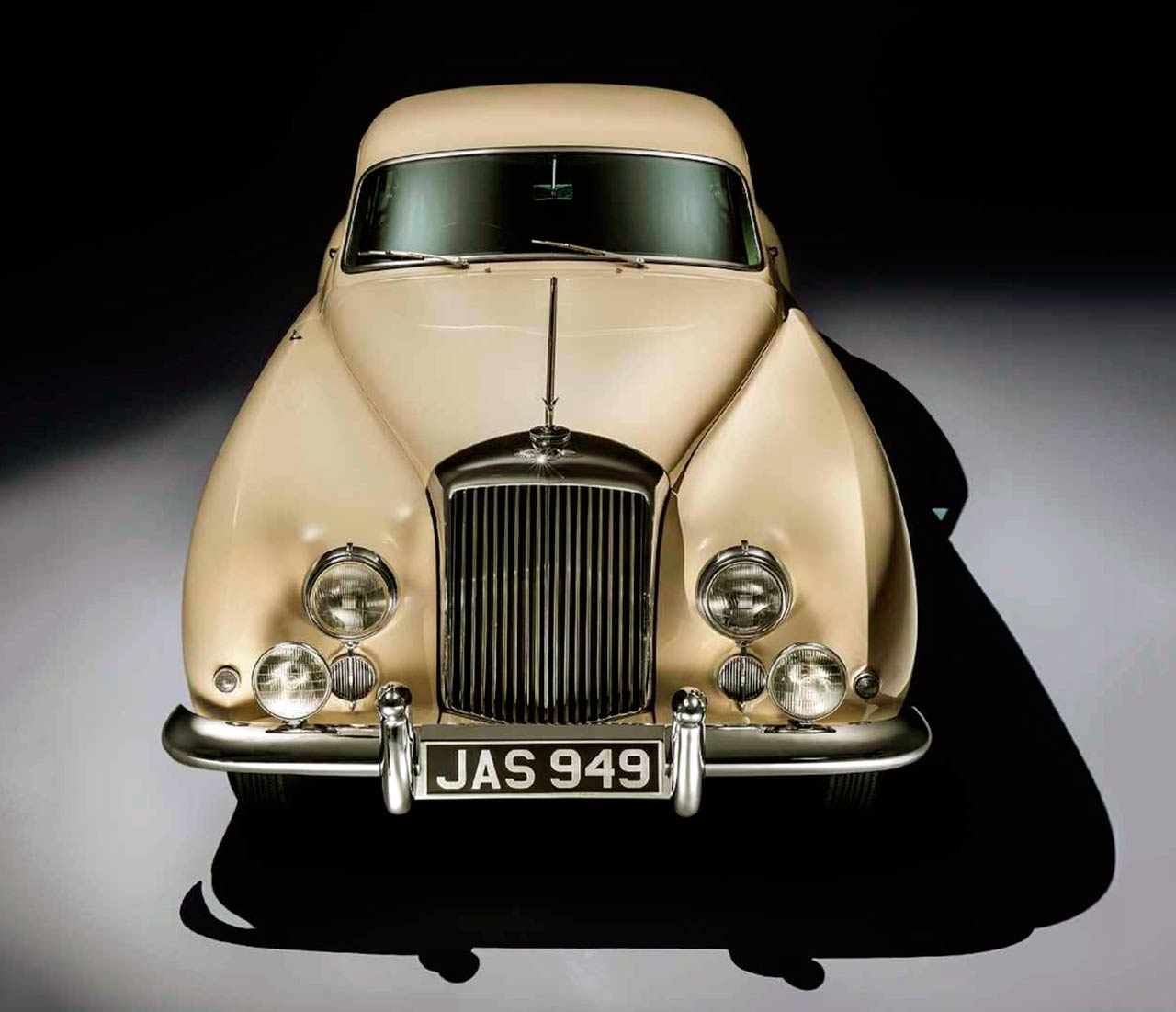
‘My favourite Bit? The gracious flow of the front and rear fenders, like a bride walking into the church. a special moment. it’s a romantic car.’ These are the words of Stefan Sielaff, Bentley’s 55-year-old design director, with the company since 2015. He’s the man charged with bringing the new Continental Gt to fruition stylistically, and also the man in charge of Bentley’s ‘design DNA’. Who better, then, to critique his great inspiration?
‘You look at it; it is a sculpture,’ he continues. ‘The Bentley designers in their day – their ability to achieve technical and production solutions was more restricted, but they were involved with much more handcrafting. The R Type Continental defines the essence of Bentley’s design DNA, and we try to reinterpret it every time.’
Is there a lesson, then, in how to design the perfect Bentley? We might not be surprised to hear his assertion that ‘proportion always comes first’, and if his belief that ‘every human has the instinctive ability to judge elegance’ sounds like it might flatter many, there can be few who wouldn’t judge the Fastback to be the archetype of elegance.

He continues, conjuring an image of himself at a sketchpad: ‘There’s the short front overhang, a good proportion of dash-to-axle, the longer rear overhang and large wheels. Then we move away from proportion to the language of shape and line. The R Type Continental has distinctive character lines. In the side elevation we have the “power line” [up and over the front wheelarch then back, dropping, through the wing and door] and the haunch. Today we use the same recipe, only we do them crisp, always sharp. The rest of the surfacing is sexy, inspired by Bentleys and also by aircraft fuselages.’
It is here that inspiration goes beyond the beautiful ivory car in our pictures, as Sielaff references the riveted alloy hulls of classics such as the Douglas DC3, and their combination of flowing forms and sharper edges. ‘They break the wind and guide the air around the body,’ he says. ‘You should feel that. It’s romantic.’ That’s a word he uses several times, and it’s an epithet that certainly befits the sort of feelings evoked by the presence of a Fastback.
Details are worked differently today, however. For instance, the headlamps and tail-lamps. On the R Type, they’re proprietary parts. Yes, there’s no doubt that the Fastback’s headlamps have inspired all the current Bentleys’, but it’s to do with positioning rather than the units themselves. Today, inspiration comes from crystal-cut glass.
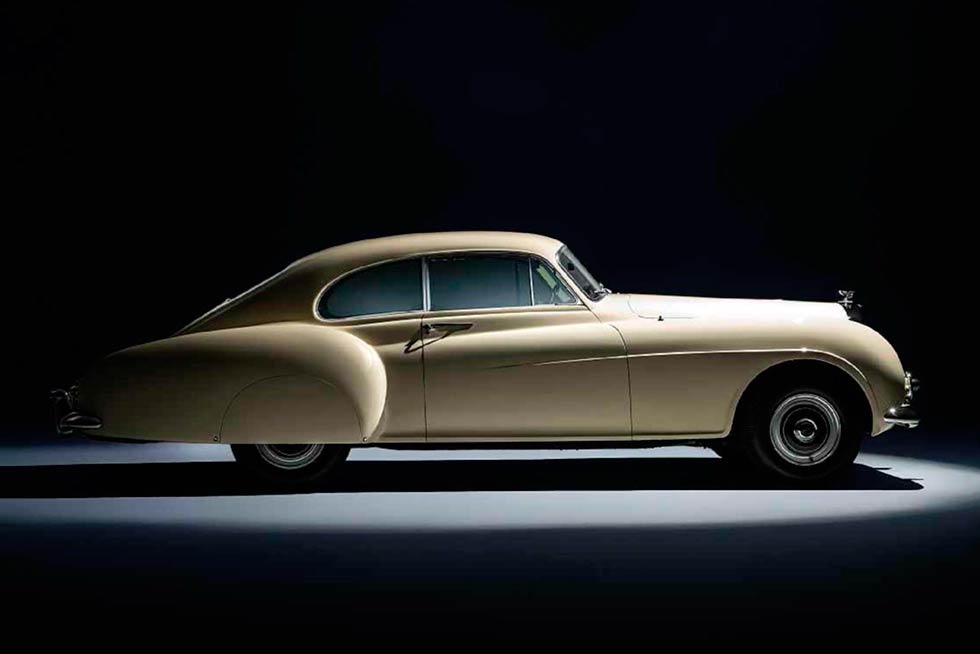
‘It’s all about atmosphere, a sense of occasion,’ says Sielaff. ‘Imagine how candle-light comes from a chandelier. It’s a move away from the more robotic treatments of lighting evident in many modern luxury cars. Think of British heritage, Scotch whisky in crystal tumblers, the fireside atmosphere of a traditional country hotel. Those are the feelings we’re trying to evoke.’
Think of that and you’re as likely to picture a Fastback parked outside as you are the latest Bentley. Here in the studio the R Type exudes an assertive calm. Sielaff is right about those proportions: strong, dignified, indicative of speed, yet also breathtakingly special, particularly in the sweep of the tail, from the trailing edge of the roof almost to the floor in a single, elongated line. This car was designed in the age of streamlining, rather than honed in a wind tunnel. If it looked fast, it probably would be. And that turned out to be true.
It also has the kind of looks that stand the test of time. Of course, nobody would look at the Fastback and imagine it could come from any other era, but a combination of its rarity, its abilities on the road, its breeding and its style mean that some have changed hands at prices upwards of £1 million. That would likely not be the case if Blatchley’s creation hadn’t transcended its era in such a way. And it’s something that Sielaff intends to remain true of the Bentleys designed under his leadership.
‘As a designer you try to be as extreme as possible but, with a luxury brand, you need to make a timeless statement,’ he says. ‘Today, car design is running after a quick statement, with complex shapes and lines. It overstretches the attention of the customer; they lose interest very quickly. Good design is complex in detail, but simple overall. If you can define a car in two lines plus its surfaces, then in future you’ll look back on a masterpiece. It’s like the Porsche 911. There’s always a satisfaction, looking back even after a decade. It’s never embarrassing. A car like that can become part of the family, passed to the next generation.’
Although the R Type Fastback was designed during Rolls-Royce’s tenure of Bentley, Sielaff believes that what differentiated it then from the mother marque is what will define Bentleys in the future. ‘It will continue to be a source of inspiration. Look at the spectrum of expensive cars. Super-sports cars on one side, luxury cars on the other. Bentley’s fusion of performance and luxury is very different from what defines Rolls-Royce. The R Type Continental contains this imagery, this elegance, this combination of sculpture, luxury and performance. It’s a different pace of luxury – not soulless and futuristic, but heartwarming. That’s the vision we have for Bentley’s future. Elegance is very, very important.’

‘Inside, the ambience is high in quality but it isn’t in-your-face opulent – that dash looks like a Mid-Century sideboard’
And it will continue to be for the foreseeable. ‘I don’t believe in breaking away from such heritage. You have to redefine and reinterpret, for sure, but don’t lose the golden flow of heritage.’
It’s time to take a look around, first examining the seven-bearing straight-six under that bonnet. It’s a split hood, so you can gain access down each side, admiring the polished trumpets of the twin SU carburettors and the black silk finish of the rocker covers. It’s understated, but it looks capable.
Move along the sides and you notice the sharp peaks of the flowing wings, the faired-in rear wheels, the gentle glow of chrome-on-brass brightwork. This 1953 example has belonged to Bentley since 2001 and it’s immaculate, a well-used yet perfectly maintained example that earns its keep by taking part in events and rallies around the world.
Swing open that long yet surprisingly unhefty door and take in the gorgeously patinated blood-red trim. It feels original in here, mature rather than simply old.
The ambience is high in quality – hide on seats and doors, cloth headliner, wooden dash – but it isn’t in your- face opulent. That dash looks like a Mid-Century sideboard, and it contains matching Bentley-badged speedo and revcounter, both of which read clockwise from the upper-right quadrant. You squeeze your knees and thighs under the slim, broad-diameter rim of the three-spoke Bakelite wheel, having already negotiated your legs and feet past the gearlever, its knob set at knee-height, the assembly getting in your way in the footwell. The window winds down with barely two spins of the winder, the high ratio of the mechanism a happy hand-over from the R Type saloon.
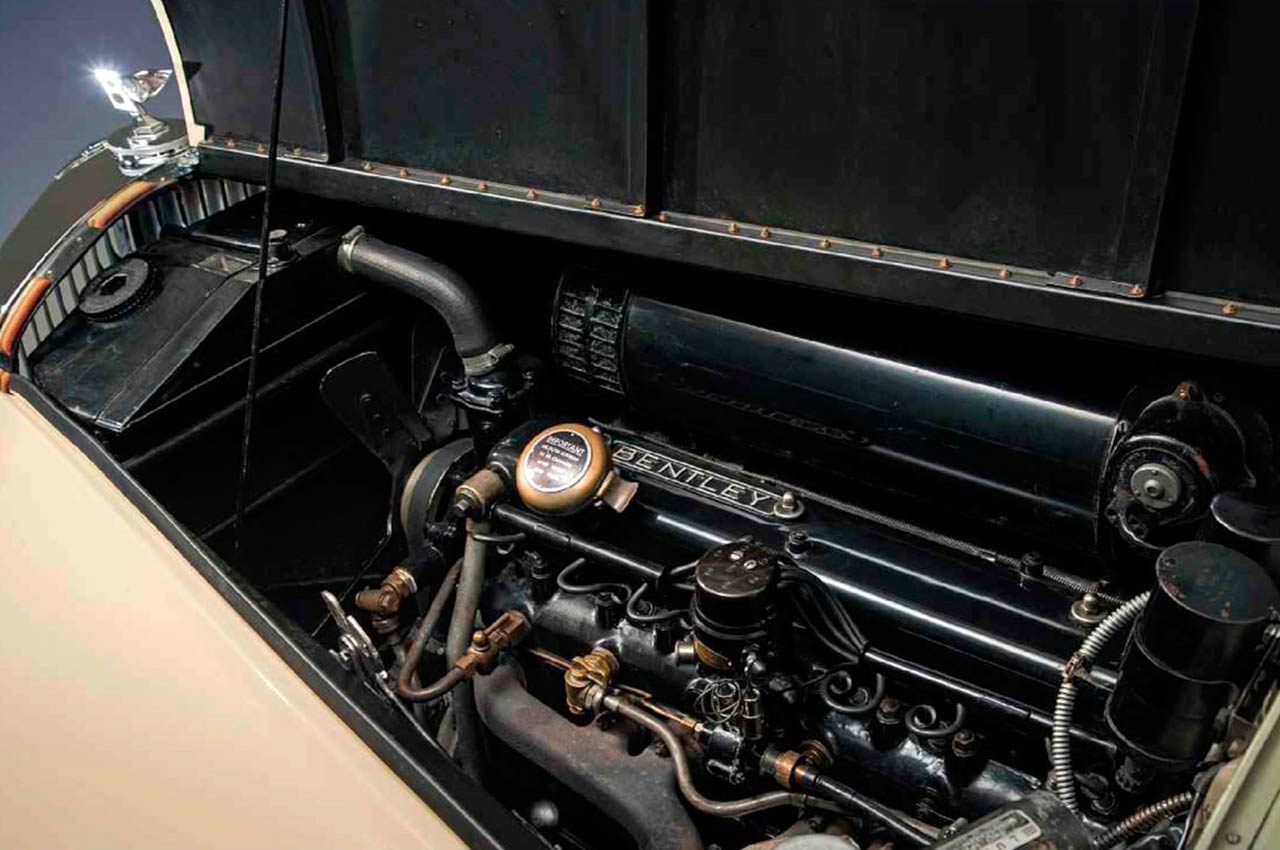
That straight-six swishes into life and breathes deeper with a gentle caress of the throttle. You can hear it, but there’s little in the way of mechanical noise, just aspiration. Select first and pull away, aware of the solidity of the gearlever, the weight of the steering and the Fastback’s lengthy dimensions. The ‘Continental’ nomenclature suits it; this is no town car.
On the open road it comes together beautifully. You sit high, well above the road in a command position, yet with legs out in front, sports-car style. The bucketseat holds you in place, so much better than sliding about on a leather bench, clinging to the wheel. Instead you get to place the car, and you can do that with surprising accuracy. There are coils and wishbones upfront, a live axle on coils and double-acting lever-arms at the back, nothing sophisticated but well-proven and certainly not archaic for the era. The ride is buoyant, occasionally a little busy, but you hear it patter and feel it bounce rather than having your teeth rattled, and the steering livens and lightens into a surprisingly consistent ally once you’re powering along.
‘Sielaff is right about the proportions: dignified, indicative of speed, and breathtakingly special’
There’s decent pace to be had, though acceleration is strong rather than thrilling: speed in this case is all about maintaining what you’ve achieved and bowling along in relative calm thanks to the long legs of that back axle. In fact, if one adjective defines your motion in this car, it is elegant. That word again. A car that drives like it looks.
And when a car satisfies with every aesthetic element as fully as the Bentley R Type Continental Fastback, there can be no higher praise.
TECHNICAL DATA FILE SPECIFICATIONS 1953 Bentley R Type Continental Fastback
Engine 4566cc straight-six, IOE, twin 2in SU carburetors
Power 153bhp @ 4000rpm / DIN
Transmission Four-speed manual, rear-wheel drive
Steering Worm and roller
Suspension Front: double wishbones, coil springs, lever-arm dampers. Rear: live axle, coil springs, dual-acting lever-arm dampers
Brakes drums
Weight 1700kg
Top speed 118mph
0-60mph 13.6sec
HEIR TO THE THRONE / NEW CONTINENTAL GT
New 2018 Continental GT Prototype unleashed in North Wales
Octane takes an early drive in the brand new 2018 Bentley Continental GT. Could it be the king of the crop? Words Steve Sutcliffe.
Even just the name is exciting. In the 1950s, ‘Continental’ was associated with some of the most beautiful-looking GT cars known to man. And then in 2003 the legendary moniker was reborn and attached to the very first car Bentley produced after it was taken over by Volkswagen. So it’s a big deal for Bentley, the new Continental GT.
For 2018, it has been completely re-engineered, to a degree that Bentley claims it is now 100% brand new.
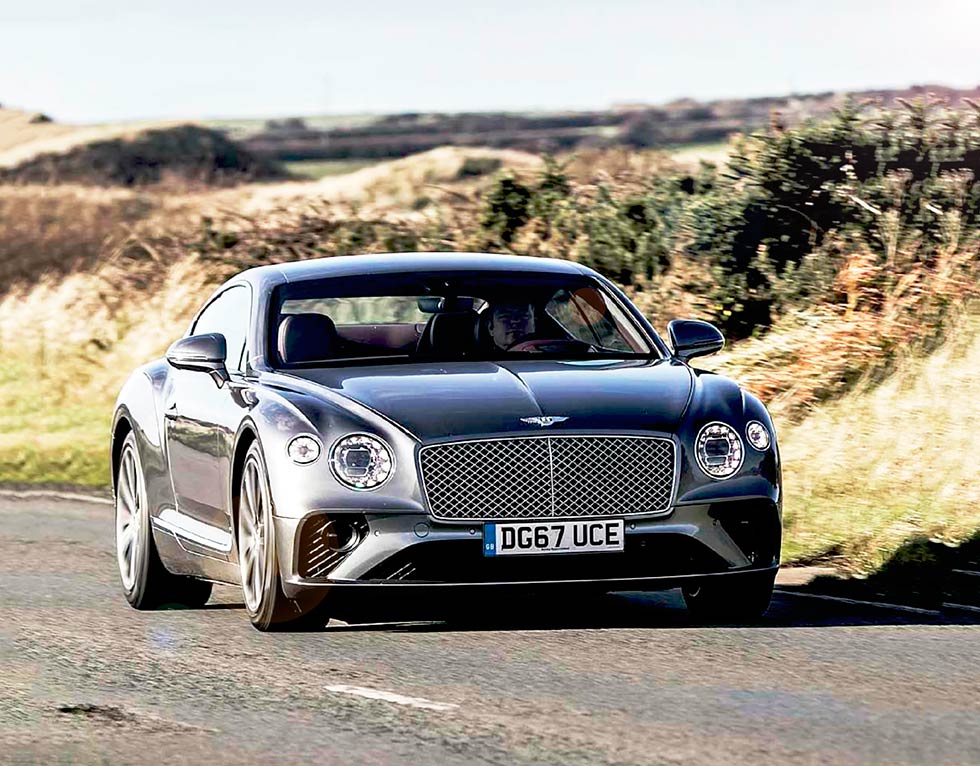
And the major news this time is that it shares its underpinnings not with a humble VW but, instead, with those of the Porsche Panamera. Bentley’s engineers were involved at ground level with their equivalents at Porsche throughout development, so they could dictate exactly which parts they were going to end up with. And that has made a huge difference to the quality of the end product.
At its heart the Conti GT is still powered by a thundering 6.0-litre twin-turbo W12 engine, but although it features the same capacity as the previous W12 this particular version is brand spanking new, even to the point that it has a different firing order. And it’s mated to a similarly fresh (for Bentley) eight-speed dual-clutch gearbox, the exact same one that’s used in the Panamera.
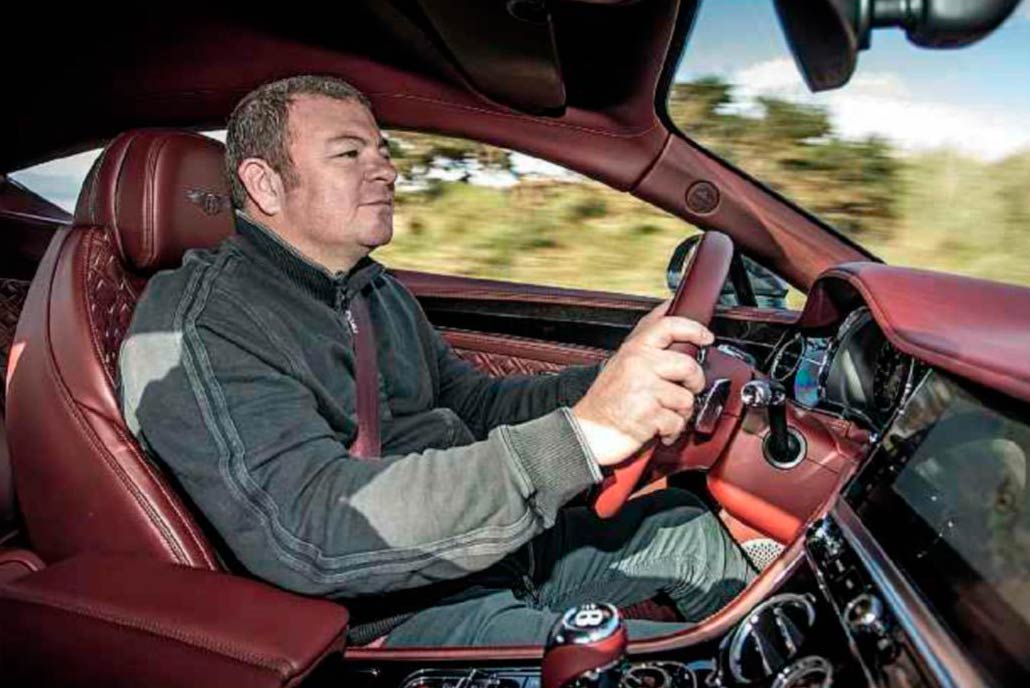
As before, the GT is four-wheel-drive and its outputs are predictably ground-shaking. Maximum power is 626bhp at 6000rpm while maximum torque is a whopping 664lb ft, developed between 1350 and 4500rpm. More plateau than peak, then, and a figure that’s almost 40% bigger than before. Combined with a launch control system, this is sufficient zeal to fire the 2244kg GT to 60mph in 3.6 seconds and to a top speed of 207mph, with 0-100mph taking well under nine seconds. For such a vast machine the new GT is seriously rapid, far more so than before, despite weighing only 76kg less than the previous model. But if anything it’s the GT’s chassis and suspension that represent the biggest steps forward, because Bentley claims the car is not only more comfortable than before but, crucially, also a lot more sporting in its intent. And once again, the sharing of parts with Porsche has aided it in this respect.
For a start, the W12 engine is set around 150mm further back in the chassis than previously, which makes a huge difference to the GT’s balance, say the engineers. There are double wishbones at the front and a multi-link arrangement at the rear, but at both ends there is a three-chamber air suspension system with a 48V electronically ‘active’ anti-roll bar. Together, these elements provide the new GT with vastly more control. The brakes are also the biggest of any production road car’s yet seen (an echo of the old car’s claim), with 420mm steel vented discs at the front and 380mm rotors at the back.
This time, the way in which the four-wheel-drive system deploys its power and torque has been radically altered, and you get to choose how it works by scrolling between Comfort, Bentley and Sport. Plus you can then tailor everything individually by venturing deeper into the drive menu and selecting Custom.
‘It almost doesn’t matter how heavy the car is because we can control everything so much better this time,’ says the GT’s chief chassis engineer Keith Sharp.

We’re in Anglesey, testing some pre-production protoypes, well ahead of customer cars arriving next summer. In Comfort mode up to 38% of torque goes to the front axle, which makes the GT feel like a regular four-wheel-drive car. But if you then select Bentley mode, a little bit less torque goes to the front axle and the car starts to feel a touch more sporting, with a corresponding step up in control from the dampers plus a more thrusting map for the throttle and gearbox. In Bentley mode there is a delicious sense of serenity about the way the GT glides across the landscape. It feels sporting but also supremely refined, with light yet hyper-accurate steering and a lovely sense of balance to the ride and body control.

On these twisting roads the new GT feels properly rapid, partly because it manages to disguise its vast weight so effectively, just as Sharp claims, but also because the responses from the engine and gearbox are so keen. And the way it summons its energy with such effortless efficiency really does need to be experienced to be believed. It feels ever-so-slightly Veyron-like in the way it sucks in the horizon and deposits you so instantly upon it.
The sense of acceleration it produces is total, yet the suspension and ride control it displays are also extraordinary. As is the way the new dual-clutch gearbox operates. Which is to say, brilliantly. Turbo-lag from the W12 engine also doesn’t seem to exist, as far as I can tell. Basically the GT goes, and goes hard, from the moment you squeeze the throttle.
But it’s not until you select Sport mode and drive it on a track that you can fully appreciate how far Bentley has gone with the GT this time. Because in Sport mode only 17% of drive goes to the front axle, and everything else – dampers, throttle, gearbox, exhaust – is set to deliver maximum sporting thrills. And in Sport mode the new GT feels quite a lot like a full-blown sports car, displaying an agility that is extremely difficult to associate with its vast kerb weight.
You can’t quite throw it around like a BMW M3 F80, but it’s not far off delivering that kind of agility. And if you turn off the ESP, as Bentley insists I do, it will do things that you will find even harder to believe. You want great big 100-yard powerslides from a Continental GT? No problem, sir, just press the right buttons in the right order and you can shred the new 22in rear tyres to your heart’s content.
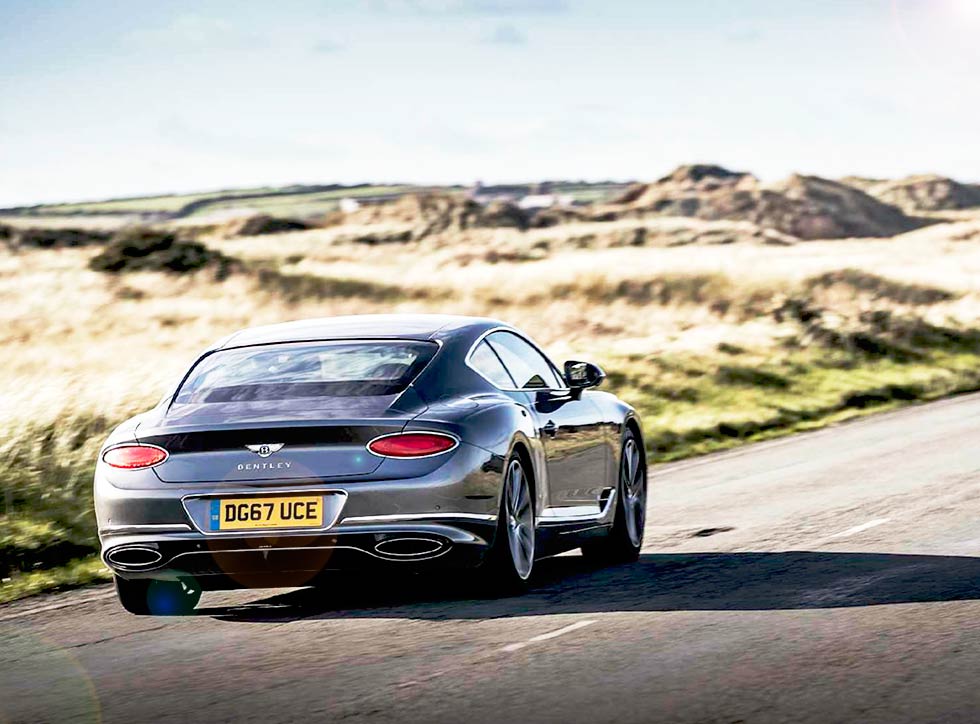
And yet at the other end of the scale the new GT is more comfortable and more refined than ever before to drive on the road. And it has one of the most high-quality feeling and best-equipped cabins of any car available, at any price. Oh yes, and in the flesh it also looks around ten times better than the old model. For a shade less than 160 grand, it could well be the best GT in the world right now. Or pretty much ever, come to think of it. But if you can’t wait for yours to arrive, or you don’t quite have that much to spend, there’s a lot to be said for the outgoing car: 200mph for £25,000? Turn the page…
TECHNICAL DATA FILE SPECIFICATIONS 2018 Bentley Continental GT
Engine 5998cc twin-turbo 48-valve V12, DOHC per bank
Power 626bhp @ 6000rpm / DIN
Torque 664lb ft @ 1350-4500rpm / DIN
Transmission Eight-speed dual-clutch automatic, four-wheel drive
Steering Rack and pinion, power-assisted
Suspension Front: double wishbones, air springs/dampers. Rear: multi-link, air springs/dampers
Brakes Vented discs
Weight 2244kg
Top speed 207mph
0-62mph 3.6sec
SCULPTING THE NEW CONTINENTAL GT
Glen Waddington speaks to Bentley design director Stefan Sielaff
‘The Continental GT is at the heart of our portfolio. Elegance is very, very important,’ says Sielaff about his latest work. New technology is responsible for the taut sculpting of the new Continental GT’s flanks: this is the first car to have an entire bodyside made using the ‘Super Formed’ process, in which aluminium is heated to 500ºC and then coaxed into shape under high-pressure air. The method allows designers to pen more sharply defined body lines, such as in the new car’s haunches. And this technology is largely responsible for a near-80kg weight-saving over the previous generation – though the car still weighs well over two tonnes…

Sielaff speaks of ‘a different pace of luxury, not soulless and futuristic but heartwarming’. He also talks about a traditional method of achieving the correct look: ‘It is important that we work with our hands. We still use clay models. Yes, we have all the most modern computer-modelling techniques, but sooner or later we always work in clay. With our hands. The human touch is important. We could move away from that, deliberately, but that leads to a lack of sensation. We need to feel the way the design works.’
Perhaps less surprisingly, the human eye is important too – though the lengths the design department goes to in order to achieve the perfect light for viewing is remarkable. ‘We paint the clay in silver,’ says Sielaff, ‘and we put it in daylight, the warmest light, not under electric light. In fact, we take the clay to our colleagues at Seat, in Barcelona, where the light is so much nicer than in Crewe! You see the reflections in the sculpture? We control the light and shadow. It’s almost like the human body, yet also abstract. With a sculpture you just see the beauty. Like a great photograph.’
Sielaff isn’t only Bentley’s director of design, he’s also responsible for overseeing interior design across the entire VW group. And a car as luxurious as the latest Bentley needs to differentiate itself from, say, a top-of-the-range Audi. So, yes, there’s tech inside the Continental GT, such as the TFT-screen instrument panel, and the nav-screen that rotates through 120º at a time to present alternative faces of wood veneer or a panel of three gauges – yet there are over 10m2 of wood veneer in each car. And the hides that cover the seats are finished with a new embroidered diamond quilting that employs 712 stitches in every single diamond-shaped panel.
Laminated acoustic glass excludes unwanted noise, while a bespoke Naim audio system keeps audiophiles happy. And while 626bhp and 2244kg aren’t exactly an environmentally friendly combination, Bentley’s Crewe factory roof was fitted with 20,815 solar panels – making for a reduction in CO2 output of 2,500,000kg per year.
CREWE’S BIGGEST BARGAIN / THE NUMBERS GAME
200mph for £25,000? Yes please.
Yes, the last Bentley Continental GT is something of a bargain. Just make sure you buy the right one… Words Glen Waddington. Photography Alex Tapley
Let’s kick off with some stats. By necessity they’re some big ones because the Bentley Continental GT was always a big deal: a superfast heavyweight with a huge twin-turbo 12-cylinder engine that was never cheap to buy new. And it was big news when it was launched in 2003. In fact, 2003 was quite a big year for Great Britain in general, as it also saw the appearance of Aston Martin’s DB9 and Jaguar’s high-tech if conservative-looking X350-generation XJ saloon.
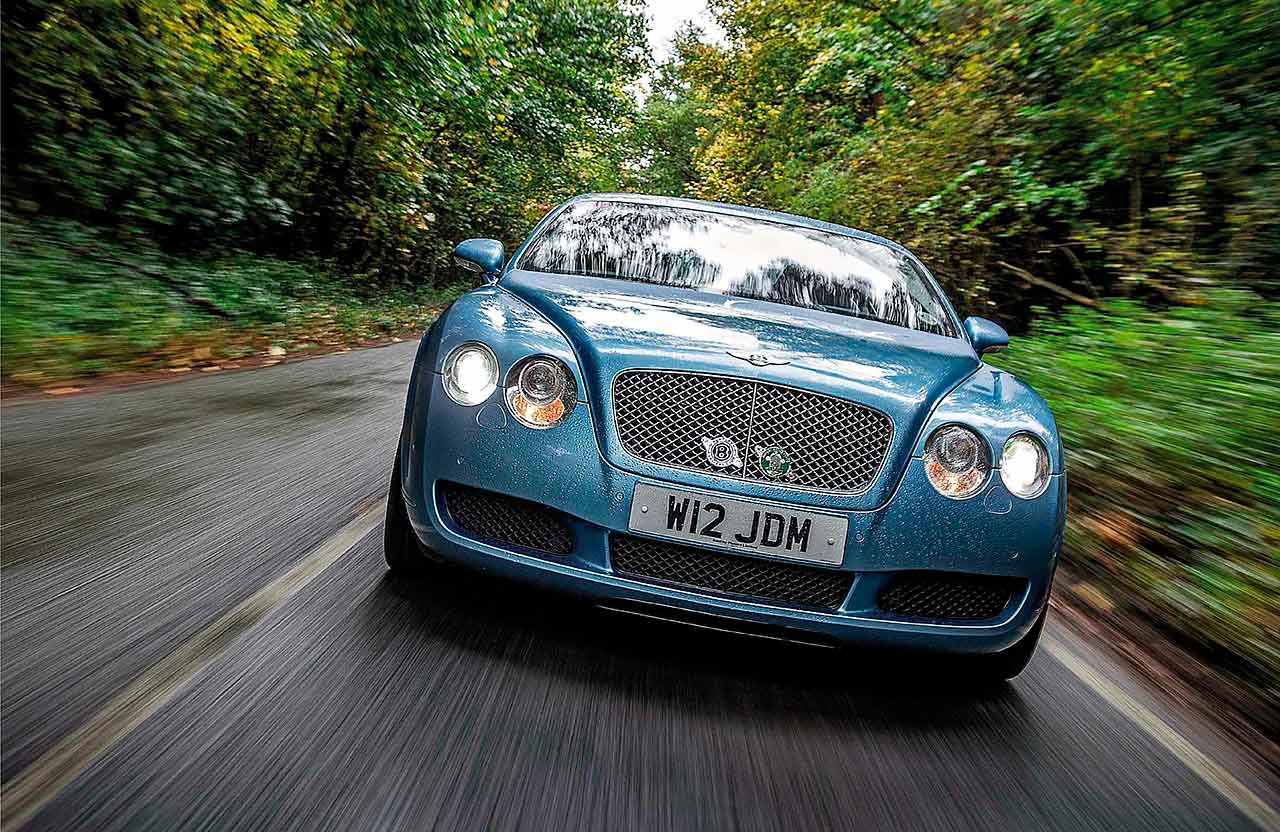
But the Continental GT was perhaps the biggest news of all because it marked a step-change in philosophy at Bentley, which had been under the auspices of the Volkswagen Group since 1998. So here it was, a new sporting luxury coupé, weighing just under 2.4 tonnes, costing £110,000, and capable of a top speed of 198mph. And it was a big hit, easily surpassing the projected production figures of 6000 per year. All this from a company that had been handbuilding leviathans by the hundred.
The secret? Crewe’s missile was (whisper it) really a German creation. A Volkswagen Phaeton platform, air suspension from Audi, and a twin-turbocharged version of the group’s 6.0-litre W12 engine, which made for 553bhp at 6100rpm and acceleration from rest to 60mph in only 4.7 seconds. All in total comfort and with the kind of backing track that sounded serious when you wanted it to, and only when you wanted it to.

Fancy some more numbers? How about 479lb ft of torque from just 1600rpm pretty much all the way to 6000rpm. Or that if you twitch your toe at 50mph, you’ll be doing 75mph only 3.3 seconds later. That the 405mm-diameter brake discs were the biggest ever fitted to a production car, engineered to generate the equivalent of 3500bhp in order to haul down nearly three tonnes of laden GT from 200mph. That it took six people a total of 18 hours to leather-stitch the steering wheel by hand. Or that you’ll be lucky to see more than 12mpg if you drive it like you want to.
‘Luxury has never been this stimulating,’ said Car magazine when it first drove one back in the late summer of 2003. ‘Never has such stimulating luxury been so affordable,’ said a bloke from Octane, just now. Really? Well, just refer back to our headline. This is the 200mph supercar (give or take) for just £25,000. Maybe even less, if you’re brave.
Of course, you can still (just about) buy one new. I doubt Bentley offers discounting but there are probably some good leasing deals available on the last few as the new Continental GT comes on stream. That’s why we’re here, after all. The arrival of Bentley’s latest is making us reappraise just what great value for money the outgoing car could be.

Walk into a Bentley dealer and the pricing starts at around £140,000 for a newly minted, old-gen V8 coupé and tops out at £233,000 for the fastest Supersports Convertible. You know, the one you need if you fancy a little more than 700bhp to shove you along with the roof down. Or, at the other end, you can pay less than £20,000 for a V12 coupé going back towards the ’03 launch, perhaps with a leggy-ish 100,000 miles on the clock. There’s better hunting above £25,000, from which you can demand proper service history and expect a mileage of 50,000 or so. The original go-faster GT Speed model kicks in around £40,000-45,000, the Supersports £55,000-60,000.
‘Here it was, a new luxury coupé, costing £110,000, capable of 198mph. And it was a big hit’
Then you’ve got the half-time revised version, not really a brand new car but heavily upgraded, and recognisable by its smaller outer front lamps, the rear numberplate housed in a wedgier-looking slot in the bumper, and a modernised interior that nonetheless carried on with a dashboard that makes the passenger feel as important as the driver. And with leather still wrapping literally everything. The Mk2 arrived in 2011 and is priced from around £60,000, the subsequent, slightly more efficient (and gorgeous-sounding) V8 version from £70,000, the Speed from £75,000, the Supersports from £85,000 or so.
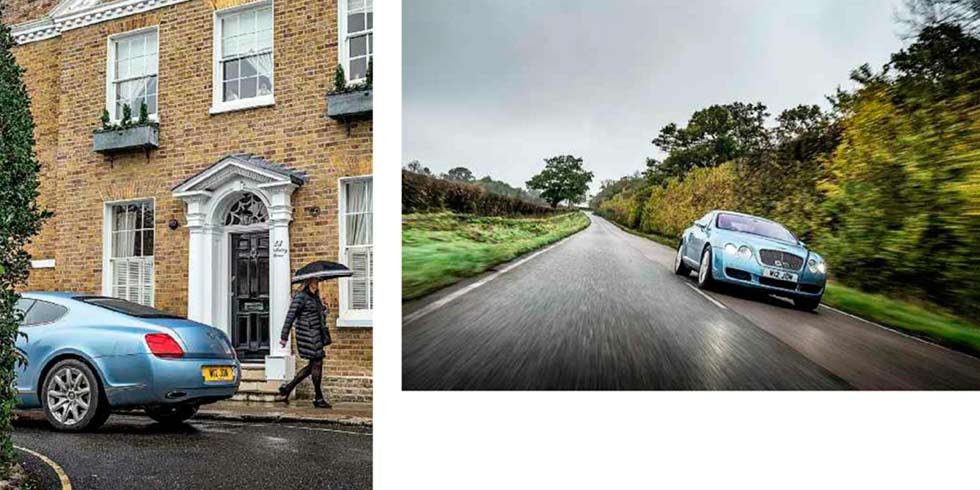
There was a convertible too, called GTC naturally enough, which bowed in 2006, and all the original series received upgrades from 2007, to become known as 2008-model-year cars.
So, what are they like to live with? Let me introduce you to the 2003 British Motor Show car, the early Continental GT owned by Jimmy Medcalf, chairman of the Bentley Drivers Club – it shares garage space with a trio of vintage Bentleys, and a 1920s four-cylinder engine, mounted on a rig so it can be started at any opportunity (satisfyingly, it fires instantly). ‘I rang Bentley shortly after the launch,’ he says. ‘There was quite a waiting list. Then I was suddenly offered the show car, and got in quick. It was the first to be painted this colour.’
‘The V12 is sonorous rather than loud, yet clear-voiced, more Ferrarikeen than Mercedes-muffled’
You can imagine how this metallic blue hue would stand out at a motor show, and it’s teamed with a soothingly creamy interior. Lots of wood and those bullseye vents and organ-stops are evidence of trad Bentley (really Rolls-Royce) style being brought into the 21st Century alongside a large touchscreen, Tiptronic transmission and full climate control. The highback seats (electrically adjusted, with heating and a massage function) feel cosseting yet supportive, and you sit high up in comparison to mere ordinary cars, yet lower and more laidback than you might in any older Bentley.
The V12 announces itself with an assertive yet discreet woofle and we move off along the road, noticing that any lumps or bumps are largely smothered by the Bentley’s mass. Any problems while you’ve owned it, Jimmy?
‘None whatsoever. It’s done just over 60,000 miles and we’ve driven it everywhere: Monte-Carlo a few times, and to the top of Scotland. We’ve just come back from a trip around North Yorkshire in it. It’s fast and relaxing. Very easy to drive quickly and it doesn’t tire you out on a long trip. And it’s had only routine maintenance. Just keeping it regularly serviced means it always runs perfectly. True, it can be thirsty, yet it will do more than 20mpg on a long cruise. Go on, put it in Sport and put your foot down.’
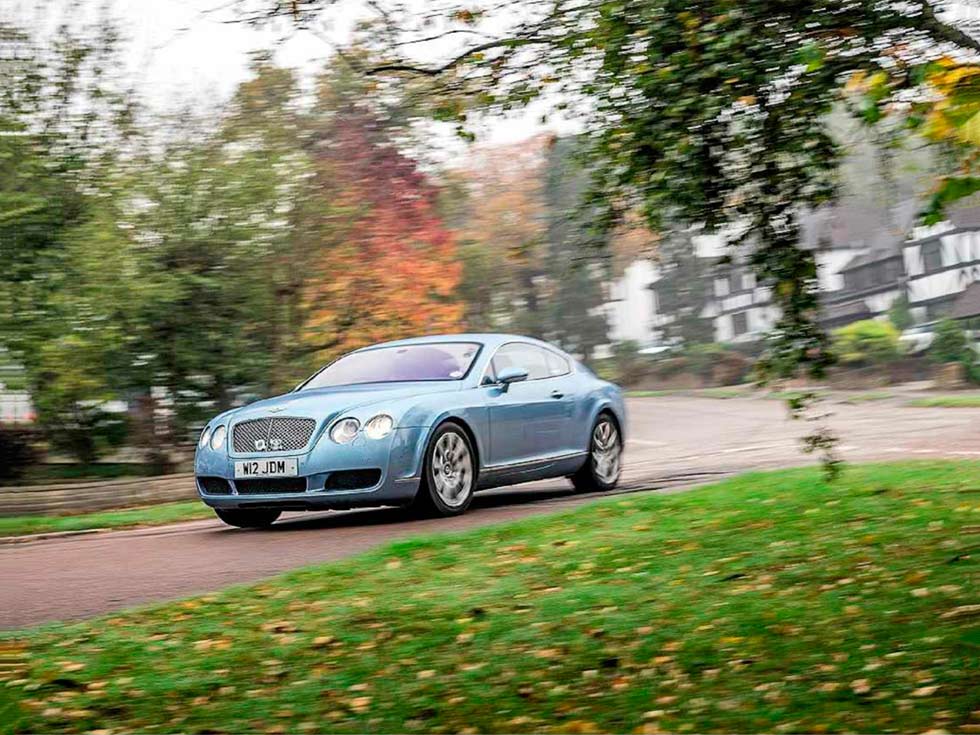
I’m happy to oblige, dropping the Tiptronic shifter and adjusting the four-phase dampers one notch up from Comfort. Then I let loose a tidal wave of torque.
The Bentley seems to gather itself and make one massive move along the road. The V12 can be heard, sonorous rather than loud, yet surprisingly clearvoiced, more Ferrari-keen than Mercedes-muffled.
There isn’t much feedback from the steering but what does surprise is how the Bentley maintains its poise through corners. Sure, it rolls a bit, but the four-wheel drive apportions torque where it helps most, allowing the car to bluster through at unlikely pace.
Any quirks to report? ‘Not really,’ says Medcalf. ‘The only funny thing was that I heard you need to remove a wing to change a front headlamp bulb. But I was also told that the bulbs last forever…’
Of course, it pays to know what you’re letting yourself in for, buying a car as fast and complex as a Continental GT – even when the asking price is a relatively modest one. ‘They’re bulletproof if they’re looked after,’ says specialist Nigel Sandell. ‘Even better if you can go for one of the cars built after 2007. Bentley made a few changes and those cars seem better-built and less prone to glitches. Of course, many of the more affordable cars have been around for a while now. With any car, you need to work out its past. And that means looking beyond stamps in the service book. You need a trail of bills to prove what’s been done.’
What you’re looking out for is a car that has been maintained regardless of what it’s actually worth; you might buy a Bentley Continental GT for £25,000, but it has the running costs of a car that cost at least £110,000 new – and items such as starter motors and alternators are an engine-out job to replace. Similarly, this is a quad-cam W12 whose timing chain runs at the back of the block…

‘The V12 is sonorous rather than loud, yet clear-voiced, more Ferrarikeen than Mercedes-muffled’
‘There are many out there with the wrong tyres,’ adds Sandell. ‘Pirelli developed tyres to cope with a 2½-tonne car that can do 200mph. If they’re missing, it’s a sign that the car hasn’t been cared for properly. And make sure any car you see has been properly garaged, especially early ones. Water ingress can be a problem and these cars have around 40 processors. Water and processors don’t mix. You can’t run one on a shoestring. Even new tail-lights are £900 each.’
Not surprisingly, they’re heavy on bushes and brakes, so beware any judders or wobbles on a test drive, and check that the car sits right. Air springs can collapse and cost £1600 per corner to replace, for parts alone. ‘And they eat batteries,’ says Sandell. ‘If it goes flat they cost a lot to get going again as you have to reset so much. Cars that aren’t used regularly aren’t good.’
Importantly, major engine and transmission work is still kept within the official dealer network, as Bentley hasn’t released the specifications to independents. ‘It’s not a DIY prospect! Possibly the best investment you could make is to take any potential purchase along to a specialist for a thorough check.’
Or you could even go the ‘approved used’ route. Bentley’s Pre-Owned Programme is open to cars of all ages, and a new-car-style warranty is available on those up to 11 years old. Just try saying that of any other 200mph supercar.
THANKS TO the Bentley Drivers Club, www.bdcl.org, and Nigel Sandell, www.nsandell.com. Also see preowned.bentleymotors.com.
TECHNICAL DATA FILE SPECIFICATIONS 2003 Bentley Continental GT
Engine 5998cc twin-turbo 48-valve W12, DOHC per bank
Power 553bhp @ 6100rpm / DIN
Torque 479lb ft from 1600rpm / DIN
Transmission Six-speed automatic, four-wheel drive
Steering Rack and pinion, power-assisted
Suspension Front and rear: double wishbones, air springs/dampers
Brakes Vented discs
Weight 2380kg
Top speed 198mph
0-60mph 4.7sec






